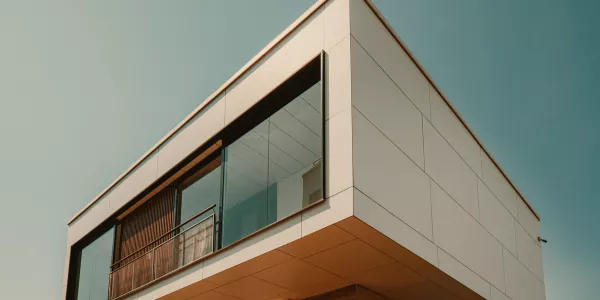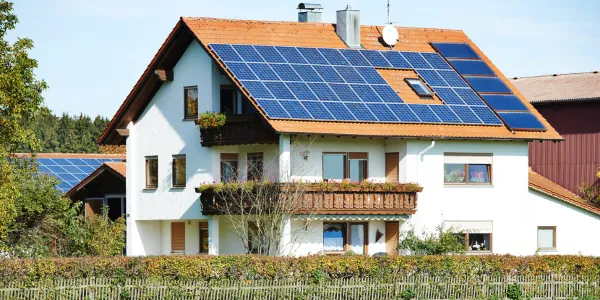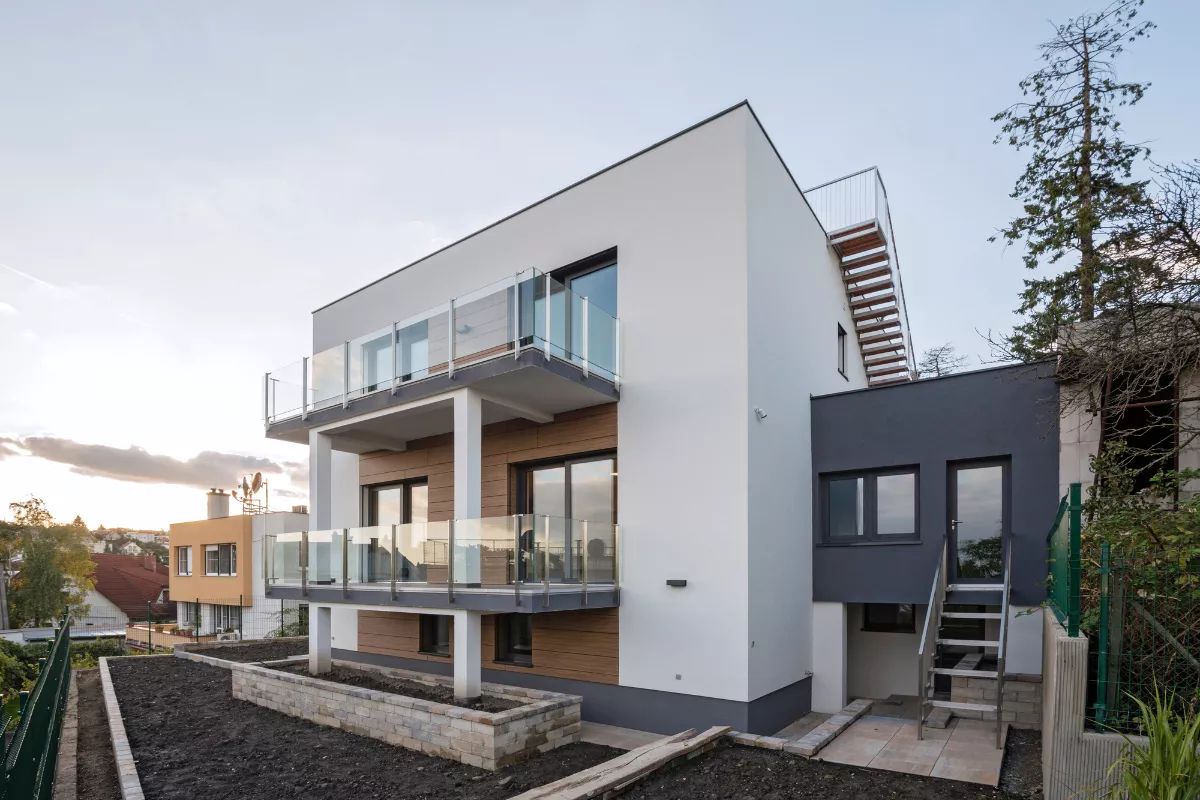Contemporary architecture, a beacon of innovation and aesthetic appeal within residential design, mirrors the dynamic nature of modern living. It encompasses a wide range of designs, influenced by a diverse array of contemporary inspirations, standing apart from the modernist movement of the early to mid-20th century.
While "modern" architecture celebrated simplicity and functionality, avoiding ornate details, it was often criticized for its lack of warmth and personality. This critique led to the emergence of postmodernism and deconstructivism, which sought to infuse more character into modernist principles, evolving into the contemporary architectural styles we see today.
Contemporary architecture not only continues the modernist legacy of blending indoor and outdoor spaces and maximizing spaciousness but also embraces regional nuances and whimsical elements. With a strong emphasis on energy efficiency and sustainable materials, contemporary architects are at the forefront of innovative, eco-friendly design, reflecting a profound commitment to both aesthetic and environmental concerns.
What is a Contemporary Style House?
While contemporary homes share some similarities with modern homes, these residences set themselves apart with distinctive features such as clean lines, abundant natural light, and a minimalist ethos, thus earning their unique spot in the architectural landscape.
Emerging in the late 20th century, contemporary architecture has been dynamic, evolving alongside shifting design trends to reflect the current vogue. This means the look of a contemporary-style home can change over time, always aiming to capture the essence of contemporary chic.
These homes are not just about style; they place a significant emphasis on the choice of building materials, favoring those that are natural and sustainable, underscoring a commitment to eco-friendly living.
Key Elements of a Contemporary Architecture Home
The beauty of contemporary homes lies in their interior and exterior features. Together, these exterior and interior features define the contemporary home, offering a living space that is at once modern, comfortable, and environmentally conscious, reflecting the evolving preferences and values of today's homeowners.
Key elements of contemporary homes interior
Moving inside, contemporary homes are designed to foster a spacious, airy, and inviting atmosphere, characterized by the following interior elements:
Open Floor Plans
The interiors of contemporary homes are known for their open, fluid floor plans, which encourage a sense of openness and connectivity between different living spaces.
Heightened Stories
While contemporary homes can vary in size, they often feature one to two stories, with high ceilings and loft-like spaces to enhance the sense of spaciousness.
High-Efficiency Appliances
The focus on sustainability extends to the interior, with contemporary homes often equipped with energy-efficient appliances, LED lighting, and smart home technologies.
Integration of Natural Elements
The use of natural materials and elements, such as wood, stone, and natural fibers, is prevalent, creating a connection with nature and adding warmth to the modern aesthetic.
Versatile Layouts
Contemporary homes often feature flexible layouts, with rooms designed to serve multiple purposes or adapt to the changing needs of the occupants.
Subtle Color Palettes
The interior color schemes of contemporary homes tend to lean towards neutral, muted tones, accented by bold and vibrant artwork or furnishings, creating a balance between calmness and visual interest.
Key elements of contemporary home exteriors
Contemporary homes are recognized for their unique and innovative exteriors, which often break the mold of traditional architectural designs. While these homes can vary greatly in appearance, they share several key characteristics that encapsulate the contemporary style:
Asymmetrical Layouts
Contemporary homes frequently showcase non-traditional and asymmetrical layouts, breaking away from the conventional symmetry found in many architectural designs.
Innovative Free-Form Designs
These homes often exhibit free-form or organic shapes, incorporating unexpected angles and curves that challenge traditional architectural norms.
Expansive Windows
Large, often floor-to-ceiling windows are a hallmark of contemporary design, creating a seamless connection between indoor and outdoor spaces and allowing for abundant natural light.
Sustainable Materials
The use of eco-friendly building materials is emphasized, reflecting a commitment to sustainability and environmental responsibility. This could include recycled materials, sustainable wood, and non-toxic paints.
Green Roofs and Walls
Many contemporary homes incorporate green roofs or living walls, which not only enhance the building's aesthetic but also contribute to insulation and biodiversity.
Manicured Landscaping
The outdoor space of a contemporary home is typically well-maintained, with tidy landscaping that complements the home's design. This might include minimalist garden designs, native plants, and sustainable landscaping practices.
Expanded Pros and Cons of a Contemporary Architecture Home
Contemporary architecture homes offer a blend of aesthetic innovation, sustainability, and functional living spaces that cater to modern lifestyles. However, potential homeowners should carefully consider the trade-offs, including the higher initial costs and maintenance considerations, to ensure that a contemporary home aligns with their long-term needs and preferences.
Pros
Aesthetic Appeal
Contemporary homes are renowned for their striking and innovative designs. The sleek lines, dynamic forms, and unique architectural elements not only contribute to curb appeal but also reflect a modern and sophisticated lifestyle. The artistic integration of various materials and textures adds to the visual interest, making each home a statement piece in its neighborhood.
Energy Efficiency
A core principle of contemporary architecture is sustainability. These homes often incorporate advanced energy-efficient systems, such as solar panels, geothermal heating and cooling, and high-grade insulation, significantly reducing the home's carbon footprint. Smart home technologies for monitoring and optimizing energy use further enhance efficiency, leading to lower utility bills and a more sustainable living environment.
Natural Light and Ventilation
The generous use of large windows and skylights in contemporary homes not only fosters an indoor-outdoor connection but also maximizes natural light, creating bright and airy interiors. This design philosophy can improve mental well-being by connecting occupants more closely with the natural environment and can lead to significant energy savings by reducing the need for artificial lighting during the day.
Functional Spaces
The emphasis on open floor plans and minimalistic design in contemporary homes leads to highly functional and adaptable living spaces. This flexibility allows homeowners to tailor their environment to their lifestyle, accommodating everything from home offices to entertainment areas with ease.
Cons
Higher Initial Costs
The innovative designs and premium materials often associated with contemporary homes can lead to higher initial construction costs. Custom architectural elements, along with the latest in eco-friendly technologies, can make these homes more of an investment upfront compared to traditional homes.
Maintenance and Durability Concerns
While contemporary homes are built with cutting-edge materials, some of these materials may not have the long-term durability of more traditional options, potentially leading to higher maintenance or replacement costs down the line. The extensive use of glass can also demand regular cleaning and maintenance to maintain the aesthetic appeal.
Over-Reliance on Trends
Given that contemporary architecture is heavily influenced by current trends, there's a risk that certain design elements may become dated over time, potentially impacting the home's long-term appeal and resale value. Keeping a contemporary home looking timeless may require periodic updates or renovations.
Thermal and Privacy Considerations
The large expanses of glass that are characteristic of contemporary homes can lead to challenges in thermal insulation and privacy. While modern glazing technologies can mitigate these issues to some extent, they may require additional investments in window treatments or advanced glazing to ensure comfort and privacy.
The 3 Styles in Contemporary Architecture
Contemporary architecture showcases diverse styles, each with unique features:
1. Minimalist

Defined by simplicity, clean lines, and open spaces, minimalism emphasizes clutter-free environments and uses monochromatic color schemes to create serene living spaces.
They have to offer a tranquil, zen-like atmosphere that prioritizes spaciousness and essential living.
2. Industrial

Inspired by warehouse aesthetics, industrial style contemporary homes feature exposed structural elements like beams and ducts, along with the use of materials such as steel and concrete. Open layouts and high ceilings are common. This style provides a modern yet nostalgic vibe, ideal for those who appreciate a touch of historical and architectural character.
3. Eco-Friendly

Eco-friendly homes focus on sustainability, using renewable energy sources, natural materials, and energy-efficient designs. Green roofs and natural ventilation are often incorporated.
They also promote a lifestyle in harmony with nature, ensuring energy-efficient and environmentally conscious living.
What is Contemporary in Architecture?
Contemporary architecture embodies the essence of current times, showcasing the forefront of design innovation, technological advancements, and the evolving values of society. It is a dynamic and ever-evolving field, mirroring our collective dreams and challenges.
Far from being a singular, homogeneous style, contemporary architecture is a broad spectrum that encompasses a diverse range of design philosophies and approaches. Within this expansive domain, numerous sub-styles emerge, each marked by unique characteristics and features, reflecting the rich variety and complexity of contemporary architectural thought.
People also ask
Is there a difference between contemporary and modern architecture?
While the terms modern and contemporary are frequently used interchangeably in discussions about architecture and interior design, they actually denote two specific and distinct styles.
Modernism represents a design movement from the 20th century characterized by simplicity and minimalistic elements. On the other hand, contemporary architecture encompasses buildings constructed from the late 20th century onwards.
What defines a house as contemporary in style?
While the recency of construction can contribute to a house being labeled as contemporary, it's not the sole determinant, as new constructions can also emulate traditional styles.
Contemporary homes, particularly those from the late 20th century to today, are typically characterized by expansive spaces, open layouts, an abundance of large windows, and modern amenities like smart home systems and adaptable LED lighting.

 Marcio Vasconcelos
Marcio Vasconcelos





